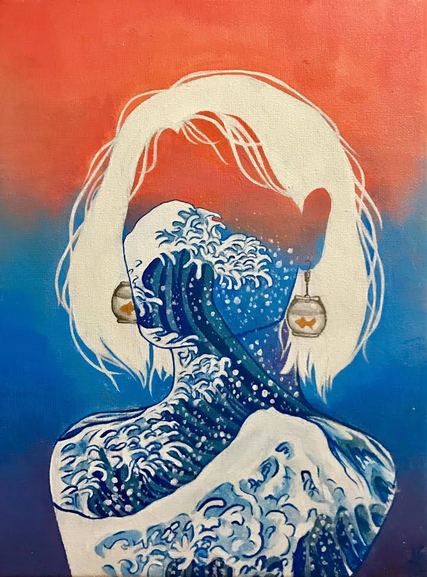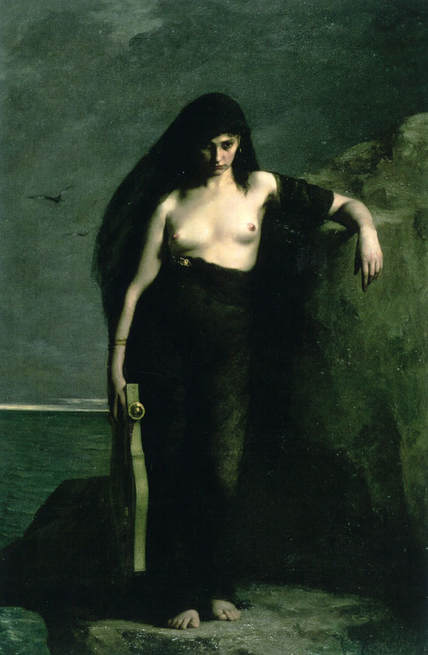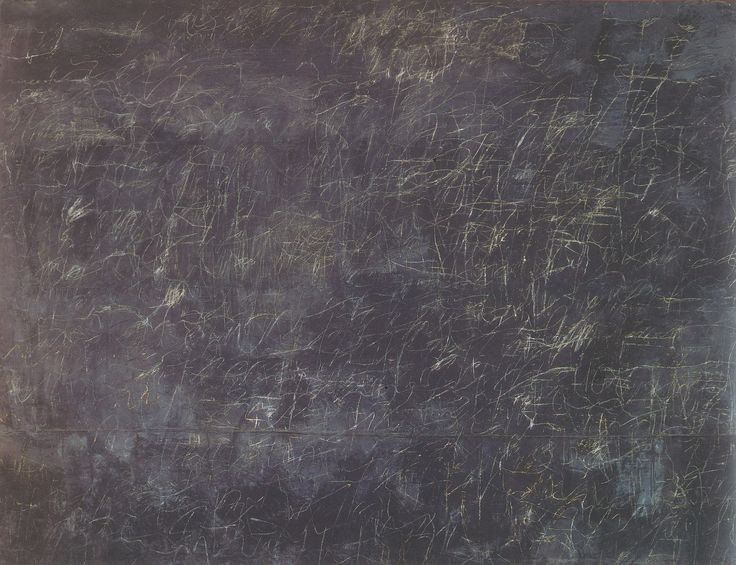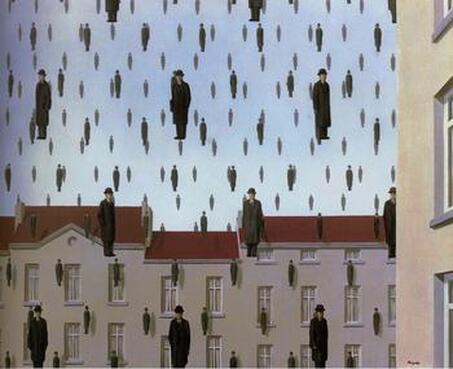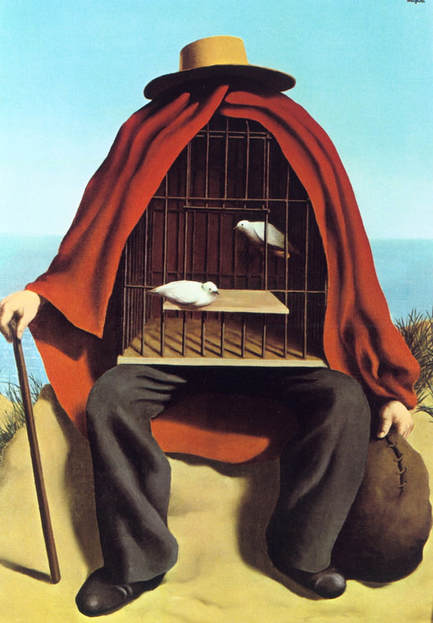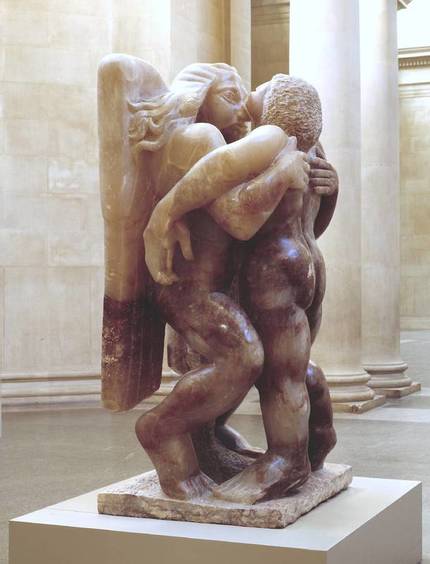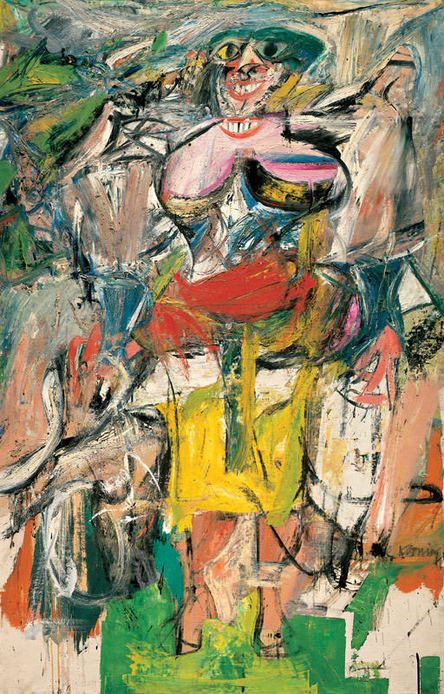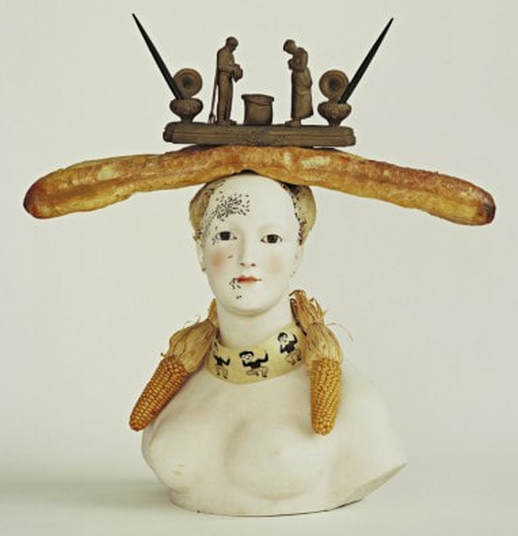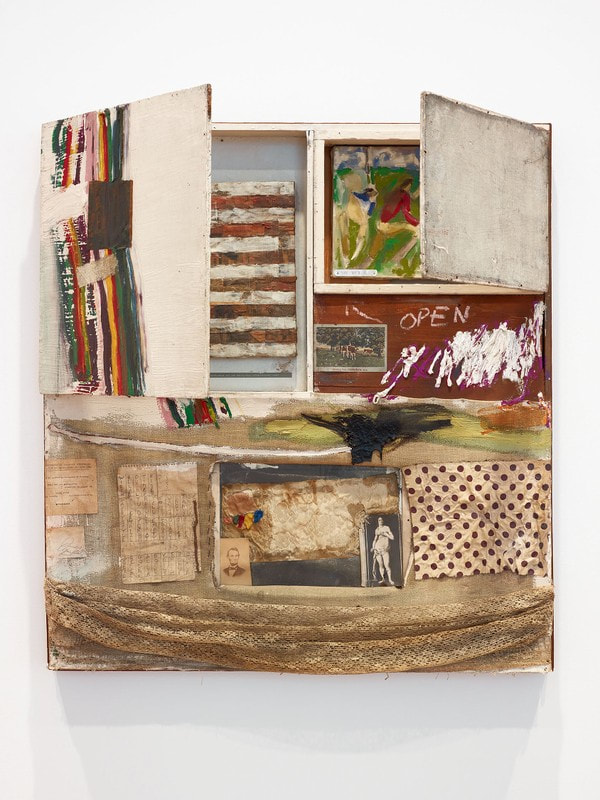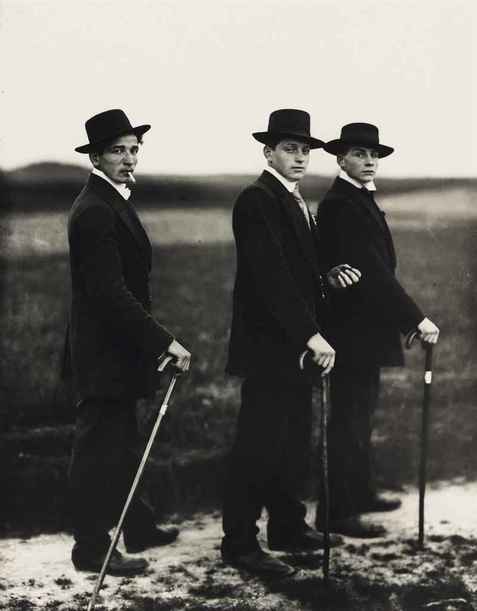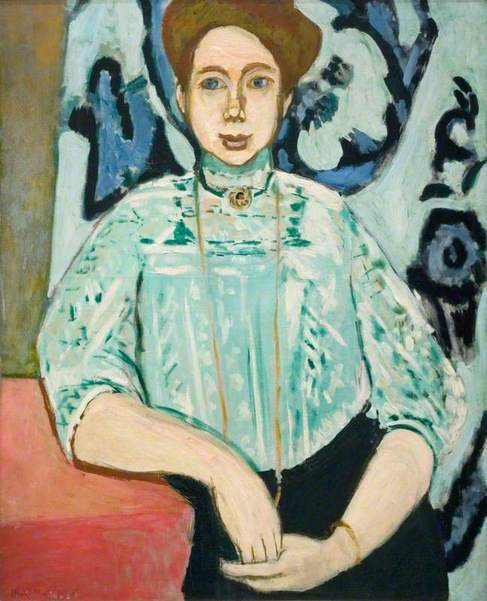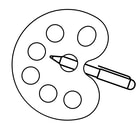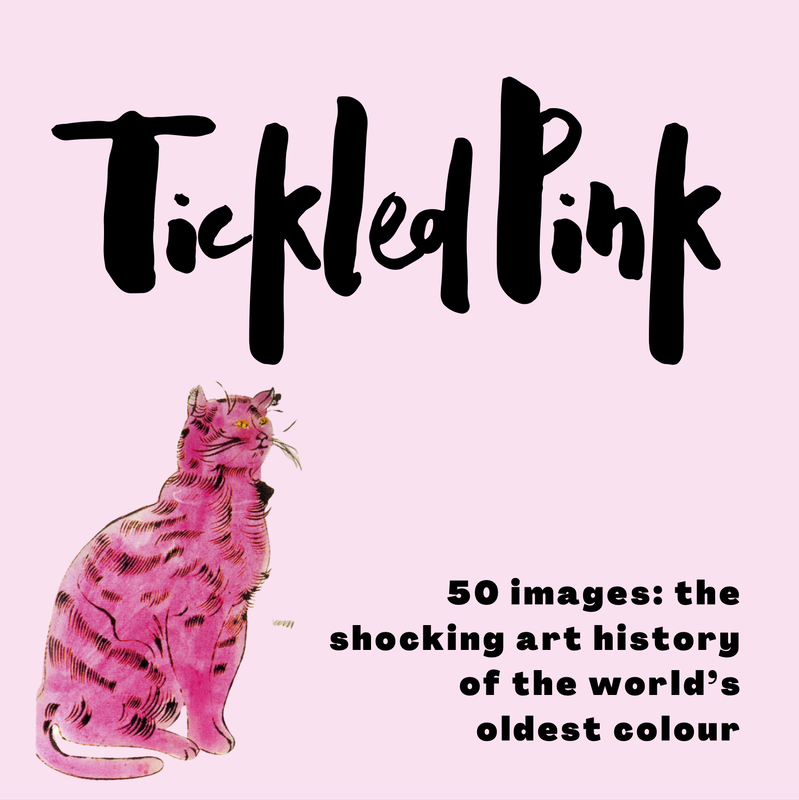|
Queen Fisher
i. her body is an undulation. ii. her body is a new translation of the tide that slept with our prettiest girls: this one slurping milk behind the wet market, this one yanking braids loose beneath the fish tank, iii. her body is thick with light and orange seeping into the vernacular; sea rhymes with men such that wife rhymes with lose the lines of your face in favour of salt-- losing means you touched me against the local shore, touching means i swam through you starting with the roll of tongue. iv. her body is a non-horizon and soon nothing will ever come through. no names may be kept, for there are only motions. no woman may find herself dry. there is only a gaze, and an emptiness within it. there is only the need to be filled. Elise Ofilada Elise Ofilada is a student at Ateneo Senior High School, and Editor-in-Chief of its publication, Pugad Literary Folio. She was a fellow for Creative Writing in Artswork 2016, and her work has appeared online, as well as local anthologies. Her work may be found at leonaeqsue.tumblr.com. She lives in the Philippines.
0 Comments
Still Ugly Inside
I sit writing in the treasure room, puffing my cheeks, ready to exhale my seminal work. The room is flooded with water and my keyboard is on fire. I see you at the edge of the cliff with your lyre in your hand. Your eyes gaze resolutely downward. The wind blows through your loosened hair. The sea lashes below and the seagulls coo violently behind. Your bosom glows with the riot of your passion. You leap into the abyss…I scream myself awake in the middle of the night. I remember how you used to fill every room that you have entered; how you would suck all the oxygen out. I remember how you invented the love song at age ten. I remember your Aragon, your musk and your black cumin. I remember your restless flame, your unruly ruminative lines. I remember how you slept with a dagger under your pillow every night when I was away. I remember how afraid you were to lose your mind. I remember how you fought life and won. You come to me with a riddle: There is a female creature who hides in her womb unborn children, and although the infants are voiceless they cry out across the waves of the sea and over the whole earth to whomever they wish and people who are not present and even deaf people can hear them. The female creature is a letter and the infants she carries are the letters of the alphabet: although voiceless they can speak to those far away, to whomever they wish whereas if someone happens to be standing right next to the reader he will not hear. You, the self-willed daughter of Pegasus, wrote yourself into history. You were the muse that muses longed for. How I wished to be one of your scribbles. You put yourself to sleep in my arms as we sit in the elephant garden. We were madly, clumsily, brutally, agonizingly, shamelessly, childishly in love with each other. I should add hopelessly, because we never had a chance. I was not equipped to carry your love in me. Not yet a man, but no longer a boy, I had nothing to offer but foolish pride. I was given beauty, but still felt ugly inside. I kept one eye always opened while you beautifully slumbered in love. I let you practice the art of our love all by yourself. I heard that you said: I wish I were eloquent now! Sorrow checks my art and all my genius is halted by my grief. My old power for poetry will not come at my call; My plectrum is sorrowing and silent, sorrow has hushed my lyre. Daughters of the island of Lesbos, children married and soon to be wed [ …] Phaon has stolen everything that once was pleasing to you, Phaon, alas, I came close to calling him mine. Bring him back; your singer too will return. He gives power to my genius: he takes it away. You finally lose control over the complications of your myth. You beat your chest, you tear your hair and you wail and wail. You say “Unheard I mourn, unknown I sigh; unfriended live, unpitied die.” Quite the opposite, my dear. You leap into water, and I leap into fire. Hakim Bishara Hakim Bishara is a writer and an artist based in NYC. His latest work is a play titled It’s Only Through Your Thoughts that I Can Remember Who I Am. Quotes from Sappho: First, from Antiphanes’ play Sappho (fourth century B.C). Source: Kock, Theodorus. Commicorum Atticorum Fragmentafr. Leipzig: Lipsiae B.G. Teubneri, 1880-88. P 196. Second, Sappho’s words in Ovid’s Heroides 15. Source: Greene, Ellen. Re-Reading Sappho: Reception and Transmission. Berkeley: University of California Press, 1996. P 85. A Background Job They had evacuated the paintings during the War. She did not know where they put them. Almost a month after the evacuation, she had received a call. They wanted her to give a tour. ‘But there are no paintings.’ she had said. ‘A tour of what?’ ‘Of the paintings that are not there.’ And so she started giving tours of the empty museum. The walls were bare. In some places, they were peeling. The lighting still worked. It mostly cast shadows off of piping, and the occasional fire extinguisher. She did not remember dates or names, just colours, shapes. Sometimes the people on the tour would complain. ‘But who drew what was once here?’ They would say, and she would just shrug. ‘Would it matter what I told you?’ She said. ‘There’s nothing there.’ She particularly enjoyed remembering a nude reclining on the bed with her arm stretched out. ‘Her stomach protrudes slightly. There is a great deal of shade near the pubic regions. Her legs are tucked together, partly covered by a white sheet which is pleated and folded many times. There are slippers on the floor. One of them is open, turned to the viewer — the other is on its side, with its back to us. By the bed, are soft fabrics. They are mostly brown and a dull red.’ She would talk endlessly about the background. She forgot the figure completely, describing every bit of cloth she could remember. She knew how many tiles were used to build perspective, and that the furthermost one on the left was slightly smaller than the rest. It reminded her of the life drawing sessions she would attend as a student. She would quickly sketch out the body. She saw it as a ‘thing.’ How quickly bodies became things when you looked at them for long enough. They floated. After making a rough outline, she would focus on the walls. Other people called it background but for her that was it. She loved the peeling paint. The roughness of wood. The dustiness of concrete. Omer Friedlander This short story was inspired by the evacuation of the Hermitage in St. Petersburg Russia during WWII. The painting shown is an editorial selection, and was not the prompt for this story. Omer Friedlander was born in Jerusalem. His work has appeared or is forthcoming in The Bastille, Litro Online, The Airgonaut, Notes, eyot, Eunoia Review and The Dial. His artwork was published on the front cover of the poetry collection And There Were Other Matters by Chagit Kahan. He is currently studying English Literature at the University of Cambridge. These Shapes
are not symbols. Do not attach meaning. Bowler hats and gentlemen may fall on the page in this frame. The words do not mean the thing. Magritte is a mark only. All that attaches to it is irrelevant. It does not help. A birdcage is not a rib cage. Paul Brookes This poem was written in response to the surprise ekphrastic challenge on Rene Magritte. Paul Brookes was, and is a shop assistant, after employment as a security guard, postman, admin. assistant, lecturer, poetry performer, with "Rats for Love", his work included in "Rats for Love: The Book", Bristol Broadsides, 1990. First chapbook "The Fabulous Invention Of Barnsley", (Dearne Community Arts, 1993). Recently published in Blazevox, Nixes Mate, Live Nude Poems, The Bezine, The Bees Are Dead and others. "The Headpoke and Firewedding" (Alien Buddha Press, 2017) illustrated chapbook, "A World Where" (Nixes Mate Press, 2017) "The Spermbot Blues" (OpPRESS, 2017). Jacob and the Angel He knows he has done wrong and this is judgment: the massive figure hits him in the jaw – bare shoulder – solar plexus – winded, he staggers back – the wall rejects him steadily – and raising his hands to shield himself tries to summon courage – the salt grit in his blink and swallow all he can muster. It thwacks him again – he howls his answer No! (which is no answer) and his shadowy antagonist – the sound of endless rockfall – pummels him into the night. But Jacob has his vision blistered with sin as it is and wills himself to wrestle this dark god. They blunder into each other; muscles bulge and heat steams over them – they’re brothers fighting for their birth; survival’s jugular struggle (moon blinks at the scene’s punched cavities). It’s only when the sun’s slim glimmer ushers change that his angel holds him. Jacob and his great sustaining angel – captured as one sculpture in the dawn’s soft rain. Sarah Law Sarah Law is a poet and tutor living in London, UK. She has published five poetry collections, the latest of which, Ink’s Wish, was shortlisted for the East Anglian Book Awards in 2014. She’s interested in artistic representations of angels, among other things. Follow her on Twitter @DrSarahLaw De Kooning’s Woman With a Bicycle
She is the tittering click of heels and gossip. Unstable as a bauble’s swing. Her soft perfumed sway unsettling the senses. . She is full of chartreuse sentiments, bringing in the evening mail with full coverage. Slyer than a nettle’s sting, she knows the art of a prying glance, the way a woman has with news rife with innuendoes. She is the slap of recognition, the smart red conversational twist, engorged with spite. She is sex self-dilated, dominating an entire landscape, legs askew for anyone’s delight. Her breasts are all the soft machinery of motherhood gone to waste. Her mind, a boxed heirloom awaiting use, its meaning rattled into place. Her eyes, the colours of tumbled quartz --milky, prone to tears. Her mouth is freshly shredded with the hard gleam of ivories loosely strung She is a woman made and then made undone. M. L. Lyons M. L. Lyons co-edited Raising Lilly Ledbetter: Women Poets Occupy the Workspace (Lost Horse Press, 2015). Lyons collaborated with Miye Bishop on a poem based dance as part of Bellingham Dance Repertory's Phrasings in Word + Dance Festival. Her poetry and fiction has been widely published and her work has been nominated for the Pushcart Prize. Most recently, she was a recipient of a Hedgebrook Vortext scholarship. Bust of a Woman
Pose with bread on your head like a hat and a balancing act of a man and a maid beside the toilet and a bin for laundry and a pen. Stare out beyond the framed air while ants race up your face, parade near your ear and on the rising road of your lip. While monkey-like men dance on your collar necklace and the harvest rests on your neck in a scarf of corn, husked and tied from behind. No discourse here but balance and oddity merged on a bust waiting to be noticed and understood. Maureen Sherbondy Maureen Sherbondy’s latest poetry book is Belongings. She teaches English at ACC in Graham, NC. The Estate of Ideas
(after Robert Rauschenberg: Among Friends at the MoMA, on until September 17) 1. Clean out the attic and the garage and find obsessions with accumulation, our historical romance novels called Collecting and Discarding. Rip the pages, erase, and smear ink black palm presses and fingertip licks on the places we clothe and disrobe from. There is never enough; there is always too much. If Manet reflected the trappings of modern society and Rothko trembled in the reverb shell-shock of post-war disillusionment, Rauschenberg is unique in his connection to consumerism and postmodern culture. He is environmentalist, idea man, repurposed social media star, and collector all in one. This week on American Hoarders, we inhale the stink of trash heaps and exhale sequined spray paint like cologne or perfume on the shores of any ocean you can’t swim beneath or live near. 2. The problems with accumulation are everywhere. Even trying to erase a masterpiece is erased from this collection. Footprints, like the prayer in your preacher landlord’s dense rock garden out in front of a pink house renovated from a disco. This is before Jeff Koons drives cars out there in suburbia and finds reflecting balls of inspiration. The prayer of heel-toe prints in sand is a reminder to the garbage men on Wednesdays to please take our worries away. They’re hell on our sciatica. God used to deliver things way back then. Now we just hope the universe comes and takes them all away. 3. What's embedded beneath the relationship of things? 4. The untitled double Rauschenberg recalls exposed blue point paper. We only waited 1,000 years to circle back to hieroglyphics. Just ask your next social network connection to get creative with emojis. They’re photos of drawings someone else created with no one particular in mind (with everyone they ever loved in mind). Jasper Johns is here. And there’s Cy rolling in the hay. No one escapes the memory of negatives. A yard sale means next year’s millionaires found a shoebox packed with discards. 5. Mother of God! A road map that blotted out the sun? The shadows alone would reassemble armageddon. Against this backdrop of backgrips and spine bumps collapsing after everything is over, the lily white secrets we didn't keep are misremembered. Jasper and I swapped Ideas until no one could think of the word for “again.” You can appreciate the lovers you stole from and still move toward something else 6. Every road trip you ever took was predicted by Bob’s tire print-- a painting of America retracing Jackson Pollock’s footfalls. Empty the dumpsters of shards from glasses, the booze bottles and perfume atomizers cast down in frustration, and suffering is in the past. We’ve all heard of tongues and inhales, last drops and stale fabric scents, but who can handle the blood and neglect and empty graves required to mix in with scattered telephone wires to create an impermanent crucifiction with everything you need to look at on your newsfeed today? 7. The pressing desire, or Pollock throwing streams of paint against the landscape. And then Bob pressing against the sacred skin of black in a symphony of junk cars 8. One Christmas my mother begged for a framed print of Klimt without a mistress. We remember his love; forget his soaked-through infidelities. The air conditioner repair service didn’t perform preventative maintenance this year and in the basement there are sodden lovers turned on their side and swimming. That same print: An untitled gold painting warped in its wooden frame. My stepfather’s Illusions after he swore off drinking. Find the Poland Springs water bottles scattered inside his upstairs studio repurposed into thin plastic vodka livers. He sipped and lied until the day he broke and lay there-- his variations on a theme by Gustav at the bottom of the landing. He left a clump of blood and hair. The helicopter delivered rotor surges that the fan ducts and air registers seeped and swelled for before the hospital and the morgue. We weep at breaking and contain keepsakes of art history in dusty storage down deep at the lowest part of throat and stomach and silence. A recycle bin is the contemporary portrait of everyone you meet. 9. Short Circuit and the words predict Basquiat-- more Bob as sideshow fortune teller at the edges of a ghost town. Short Circuit, as flags and dots and rotting photos of Americans we hold car sales to commemorate. For the commercial breaks, don't decorate a dance, make something we can dance through, like curtains disguised at sheets flipped and swooped on top of a bed the two of us lurk and creep near. Every mattress we hang on walls is part warning and part testimony in an excruciating rape trial. Exhibit A should explain Degas to jurors, looming madness from retelling the stories of those around you, like with Interior from 1868 and 1869. In a mirror, which every painting and collage evolves to, the parentheticals switch to bold and disfigured exteriors. Watch out for your record collection: Are you the needles now, an absentminded melody you hum and measure breaths to, or the music circle twists contain? 10. Everywhere there are subtle reminiscences about the power of Jasper's dreams of flags 11. And the bird held the pillow like what's heavier, a pound of retreat, an ounce of prevention, or the regret of feathers after nightmares? There are noises we tie to nooses in canyons, and only Bob projects movies on the floor so the docents won't let you step in, or on, and through to the next thing and the next thing after. Films share sheens of floorboards and they mouth soundlessly, Remember? Don’t go. Please don’t ever forget me. 12. There's a fire bell in the middle in warning of the emergencies we neglect and ignore. Everything Bob stole and reflected on later-- the street signs and debris-- ask and beg forgiveness. But can you steal something that has already been abandoned? How about the lovers you haven’t left yet? Shore yourself up at the next exit sign and be careful to verify you’re no longer following people you don’t believe in collecting anymore. Kurt Cole Eidsvig Kurt Cole Eidsvig been published in journals like Slipstream, Hanging Loose, Borderlands, Main Street Rag and The Southeast Review. A former featured columnist for Big Red and Shiny, his work has earned awards from the Warhol Foundation / Creative Capital, the Massachusetts Cultural Council, the South Boston Literary Gazette, and The University of Montana. A visual artist as well as a poet, Kurt has taught courses in Writing, Art, and Art History at UMASS Boston, The University of Montana, and the Isabella Stewart Gardner Museum in Boston. He maintains a website at www.EidsvigArt.com. Three Farmers on the Way to a Dance
They look as if they were characters of a Beckett play stuck in some no man’s land between one of those places where people are buried up to their necks in refuse or worse, and another, where all the dwellings have been burned out and partially rebuilt, then abandoned once the will to go on flagged and couldn’t be revived. The ill-fitting suits they wear convey a message: we’re here at the wake for the food and drink and we’ll gladly sneak out behind the seen-better-days cottages for a snog with a lass or maybe dance a jig if music should happen in between toasts for the dearly departed,:“May he go in peace and always have the wind at his back.” None of them do bereavement or real joy either, but they will take a drink, if offered, maybe two or three and then, whatever chaos ensues will make what remains of the night a memorable one. They have no clue what any of this means or whether they are in it for the long haul or just passing through. It’s a long walk from where they are now to wherever it is they are going. Alan Catlin Alan Catlin has been publishing for parts of five decades. His work derives from many interests from Art, music and literature to the bars he lived and worked in. His many full length books and chapbooks include the ekphrastic collection "Effects of Sunlight on Fog" from Bright Hill Press and, more recently from Future Cycle Press, "American Odyssey" largely derived from photos by Mary Ellen Mark and photos by photographers killed in Vietnam. Forthcoming is "Wild Beauty", also largely ekphrastic, from Future Cycle Press. His chapbook, "Blue Velvet" (poems inspired by movies) won the 2017 Slipstream Chapbook Award. Brash Shocking Beastly Use of Colour
The eyes of Greta and Amelie stare from seated portraits by Matisse French minions did accept wife Amelie’s outrageous hat plumed in fashion’s most egregious statement with wild feathers burying her forehead after Gertrude Stein and family paid Matisse thus spurring Parisians to come and take a look His Amelie backed by streaks of green yellow pink red blue purple smudges tilts her face above demure-held fan curved colours smudged below her chin and held in black-gloved hand Dob of yellow on her nose even some above her lip set the artworld afire and embarrassed Amelie Her gaze reflected hours of posing and was her hair in real life that deep dark red Did he bring goblets of water or remove her weighty hat after those dark colours were outlined in black Above Greta Moll’s straight-on student face there’s a fan of upswept brown hair above her broach Did she find the three ten-hour stints of posing tedious Her teacher changed colors of the garments several times blouse from lavender to green until his eye found harmony although Greta thought he made her arms too plump Matisse said they balanced out which she accepted later Some still disagree to whom she left her portrait when wartime fled her into Wales The Nazis never did take the painting London has Greta but grandchildren want her back War has more than corpses. Somber eyes announce confusion amid the gist of museum logic Even Matisse said his wife of course was really wearing black One by one additions multiply hide divide bold brushstrokes as the oils dry Mary Ellen Talley Mary Ellen Talley’s poems have recently been published in Peacock Journal and Kaleidoscope as well as in the anthology, Raising Lilly Ledbetter Women Poets Occupy the Workspace. Mary Ellen worked for many years with words and children as a Speech-Language Pathologist (SLP) in Seattle public schools. |
The Ekphrastic Review
COOKIES/PRIVACY
This site uses cookies to deliver your best navigation experience this time and next. Continuing here means you consent to cookies. Thank you. Join us on Facebook:
Tickled Pink Contest
April 2024
|
